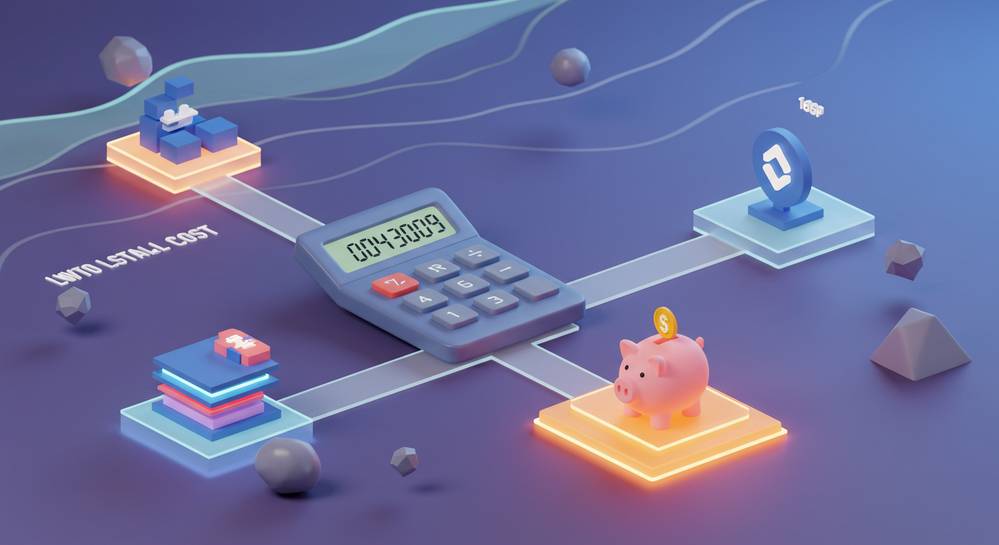High transaction fees can significantly reduce your crypto investment returns, turning potential profits into frustrating expenses. The process of choosing a crypto exchange with low fees is more than just picking the one with the lowest advertised rate. This guide will provide a clear framework, helping you understand the complete cost, evaluate crucial factors beyond price, and select a platform that truly aligns with your financial goals.
Contents
Understand the different types of crypto exchange fees

When choosing a crypto exchange with low fees, looking beyond the main trading percentage is crucial. The most affordable platform is one that minimizes your total expenses across all activities. Understanding these often overlooked costs helps you make a truly informed decision and avoid surprises. This knowledge is a core part of choosing a reliable crypto exchange that fits your budget.
Here are the key fees that impact your total cost:
- Trading Fees: Most exchanges use a maker-taker model. Makers, who add liquidity with limit orders, typically pay lower fees. Takers, who remove liquidity with market orders, usually pay more.
- Withdrawal Fees: Pay close attention to fixed crypto withdrawal fees. A flat fee can be very expensive for small transfers, significantly increasing your cost basis on minor transactions.
- The Spread: This hidden cost is the difference between the buy and sell price. Exchanges with poor liquidity often have wider spreads, meaning you pay more to buy and get less when you sell.
- Network Fees: These are blockchain transaction costs paid to miners or validators. Many exchanges pass this fee directly to you, sometimes with an additional service charge.
Evaluate key factors beyond just the fee structure
A low fee is meaningless on an insecure or unreliable platform. While the goal is choosing a crypto exchange with low fees, your evaluation must balance cost against other critical factors. This comprehensive approach protects your investments and ensures a smooth trading experience. Following cryptocurrency security best practices starts with picking the right platform.
Consider these essential elements beyond the fee schedule:
- Security: Prioritize exchanges with two-factor authentication (2FA), significant cold storage reserves, and a public insurance fund. A strong security track record is non-negotiable.
- Liquidity: High liquidity ensures tighter spreads and efficient order execution. This prevents slippage, especially on large trades, saving you money indirectly.
- Supported Assets: Ensure the platform lists the specific cryptocurrencies relevant to your strategy. The quality and relevance of assets matter more than the total count.
- User Experience (UX): An intuitive, easy-to-navigate interface is vital. A confusing platform can lead to costly mistakes, negating any savings from low fees.
How to compare exchanges for the lowest total cost

A systematic comparison is the most effective way to find the exchange with the lowest true cost for your specific needs. Your trading habits heavily influence which fee structure is best. For instance, a high-volume day trader must prioritize low maker-taker fees. A long-term investor who rarely trades will be more concerned with withdrawal fees. This level of detail is a crucial part of researching cryptocurrency projects properly.
Create a simple checklist to compare your top choices side-by-side. Focus on hard data and avoid being swayed by marketing. Always verify the fee schedule directly on the exchange’s official website, as this information can change. This diligence is essential when choosing a crypto exchange with low fees that aligns with your strategy.
A simple comparison framework
| Feature | Exchange A | Exchange B | Exchange C |
|---|---|---|---|
| Taker Fee | e.g., 0.1% | e.g., 0.2% | e.g., 0.075% |
| Maker Fee | e.g., 0.1% | e.g., 0.1% | e.g., 0.025% |
| Crypto Withdrawal Fee | Network Fee Only | Network Fee + 0.0001 BTC | Fixed Fee (e.g., 0.0005 BTC) |
| Security Features | 2FA, Cold Storage | 2FA, Insurance Fund | 2FA, Cold Storage, Whitelisting |
Analyze leading exchanges and their fee models

No single exchange is best for everyone, but understanding their models is key to choosing a crypto exchange with low fees. Some platforms target active traders, while others prioritize security. This analysis looks at their different approaches based on public information, not as a direct endorsement. It helps you align a platform’s strengths with your personal priorities.
Centralized exchanges for active traders
Platforms like Binance and KuCoin appeal to frequent traders with very low maker-taker fees. They often use tiered structures where higher trading volumes unlock lower costs. Holding the exchange’s native token can provide further discounts. However, always verify their withdrawal fees, as these can vary significantly by asset.
Exchanges prioritizing simplicity and security
In contrast, exchanges like Kraken or Coinbase Advanced Trade might have slightly higher base fees but are renowned for security. For investors who prioritize safety and ease of use over saving a fraction on trades, these platforms can be a better value. Their fee structures are often more transparent and less complex for beginners.
Finding the right crypto exchange is about balancing low fees with robust security, high liquidity, and a user-friendly platform. By understanding the complete fee structure—not just the trading fee—and comparing platforms based on your personal trading habits, you can make a choice that truly enhances your investment strategy. For more expert insights into the technology shaping our world, explore Virtual Tech Vision for in-depth guides and analysis.









